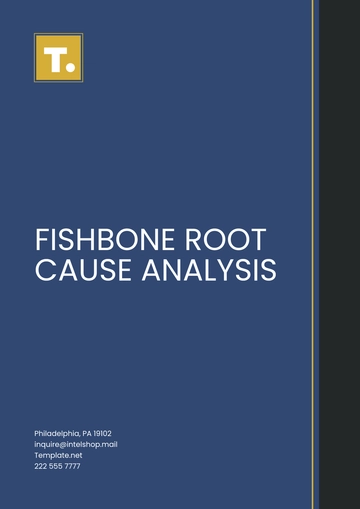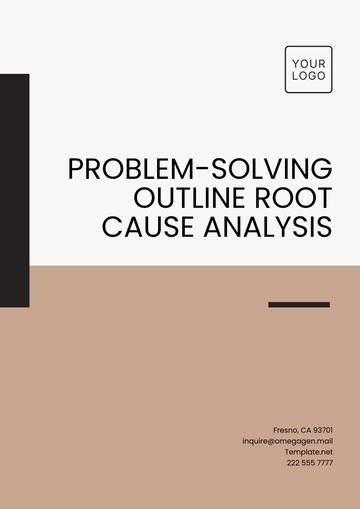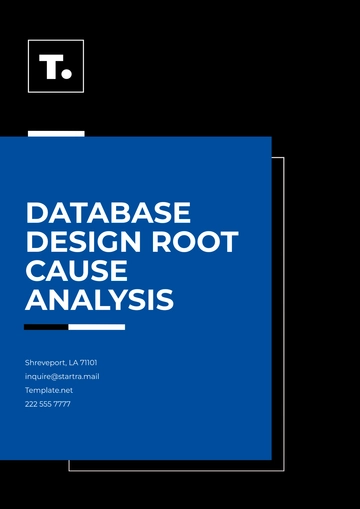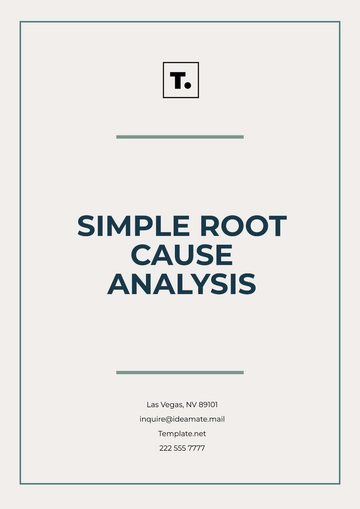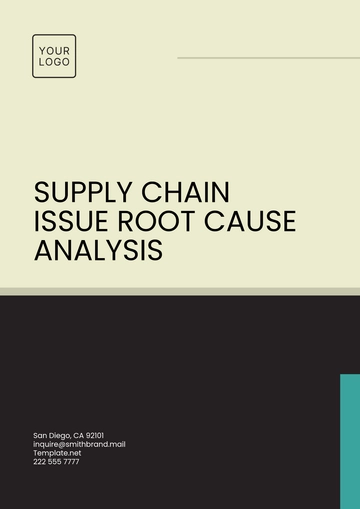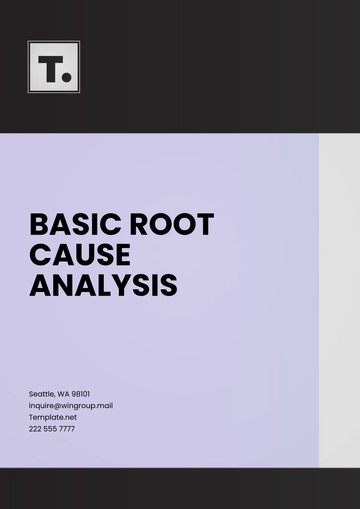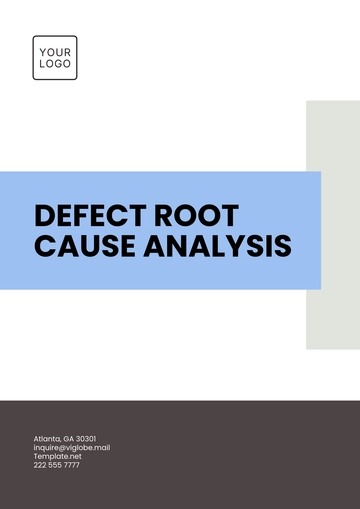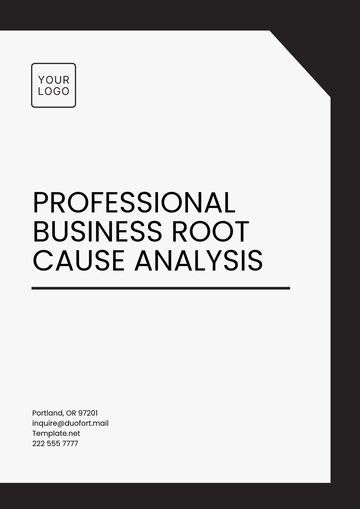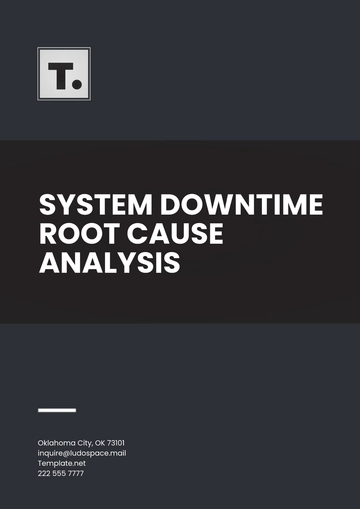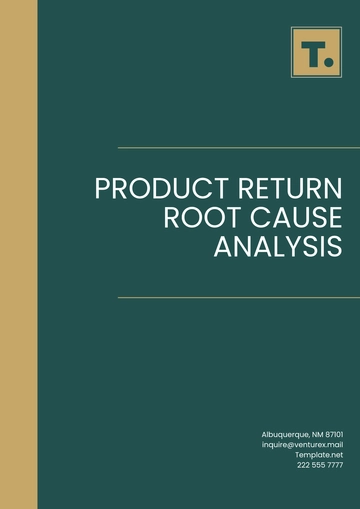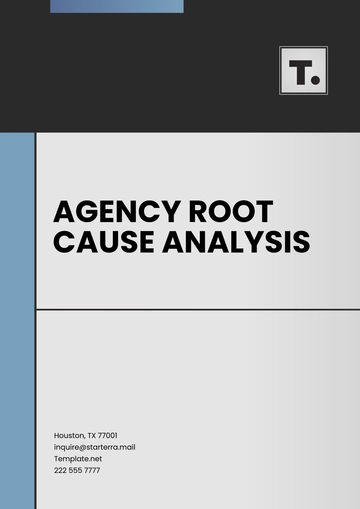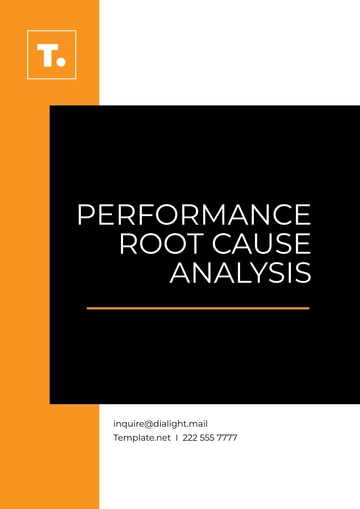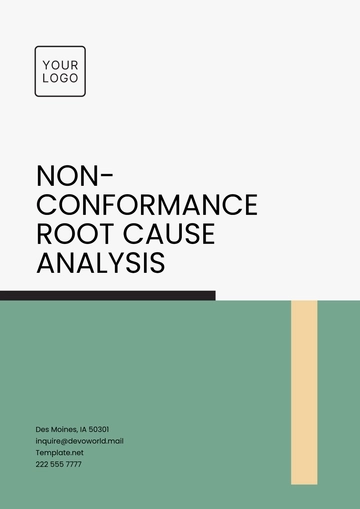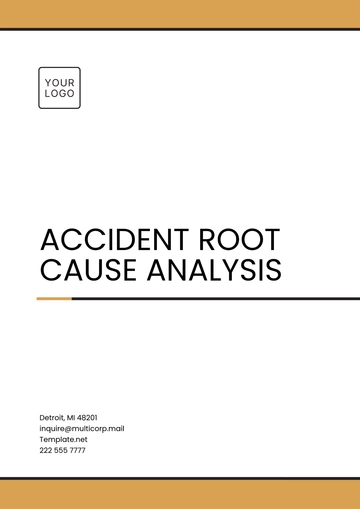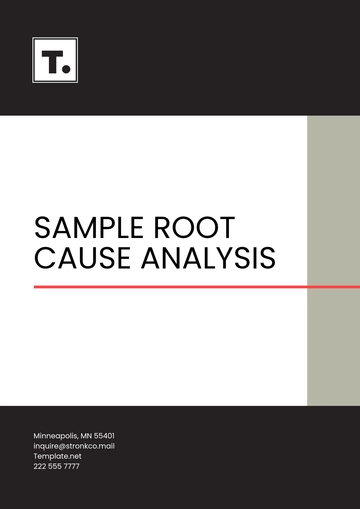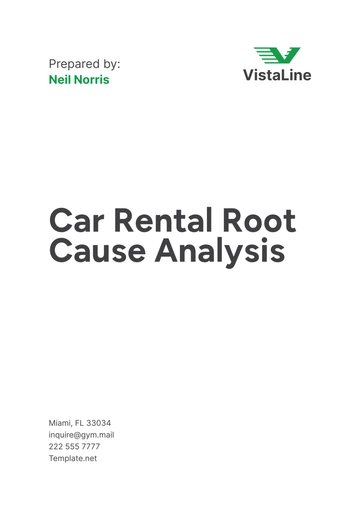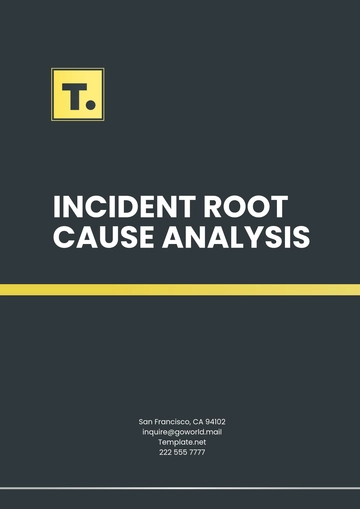Free Administration Detailed Financial Analysis Report

Introduction
This comprehensive financial analysis report aims to offer a thorough assessment of [Your Company Name]'s financial standing. With a keen focus on essential elements such as balance sheet evaluations, income statement reviews, revenue trajectory, and operational efficacy.
Overview of Financial Performance
[Your Company Name] has showcased notable fiscal expansion and resilience over recent years, attributable to various factors including astute strategic planning and proficient management. Spanning a [five-year] duration, the analysis offers a detailed exploration of financial performance indicators and trends shaping the company's trajectory.
Year | Revenue | Net Income | Operating Expenses |
|---|---|---|---|
2050 | $5,000,000 | $1,200,000 | $3,200,000 |
Revenue shows a steady increase each year, indicating consistent growth in sales or other income streams. Net income follows a similar upward trend, suggesting that the company is effectively managing its costs and generating higher profits over time. Operating expenses also rise but at a slower pace compared to revenue, indicating efficient cost management practices.
Overall, the data reflects a positive financial trajectory for [Your Company Name], with increasing revenue and net income coupled with controlled operating expenses, portraying a healthy financial outlook.
Financial Statement Analysis
The Financial Statement Analysis section provides a comprehensive examination of [Your Company Name]'s financial performance, highlighting key findings and trends observed over the analyzed period. Through a detailed assessment of various financial metrics, this section aims to offer insights into the company's fiscal health and its potential for future growth. Key findings from the Financial Statement include:
The consistent annual revenue growth underscores [Your Company Name]'s proactive approach in identifying and capitalizing on market opportunities, resulting in a gradual yet robust increase in sales volume over the analyzed period. This sustained growth reflects the company's ability to adapt to market dynamics and signifies its capacity to effectively meet consumer demands and maintain competitiveness within its industry sector.
Over the analyzed period, there has been a substantial rise in net profit margins, indicative of [Your Company Name]'s relentless pursuit of operational excellence and cost-efficiency strategies. This significant improvement in profitability highlights the company's success in optimizing its revenue streams while concurrently implementing measures to mitigate unnecessary expenses and enhance overall financial performance.
The steady enhancement in equity positions [Your Company Name] as a reliable investment choice, reflecting growing confidence among shareholders in the company's future growth prospects and financial stability. This consistent uptrend in equity not only underscores the company's ability to generate value for its investors but also signifies its prudent financial management practices and commitment to delivering sustainable returns over time.
Operational efficiency and stringent financial administration have played pivotal roles in driving [Your Company Name]'s improved financial performance. Through the implementation of streamlined processes and effective resource allocation strategies, the company has been able to optimize its operational efficiency while simultaneously controlling expenses. This disciplined approach to financial management has enabled [Your Company Name] to maintain a healthy balance between revenue generation and cost containment, ultimately contributing to its sustained growth and profitability.
The Financial Statement Analysis reveals a positive trajectory for [Your Company Name], characterized by consistent revenue growth, improved profitability, and growing stakeholder confidence. With a strong foundation in operational efficiency and prudent financial management, the company is well-positioned for future growth and success in the market.
Financial Ratios and Indicators
A critical aspect of financial analysis involves the examination of various financial ratios, which provide valuable insights into [Your Company Name]'s performance and financial health. This report presents a comprehensive breakdown of key financial ratios relevant to [Your Company Name], offering a detailed assessment of its profitability, efficiency, liquidity, solvency, and market prospects over the past [five years].
Financial ratios and indicators are essential tools used in financial analysis to evaluate the performance and health of a company like [Your Company Name]. Here's an explanation of the key ratios and indicators typically used:
Profitability Ratios: These ratios assess the company's ability to generate profits relative to its revenue, assets, or equity. Common profitability ratios include:
Gross Profit Margin: Measures the percentage of revenue remaining after deducting the cost of goods sold.
Net Profit Margin: Indicates the percentage of revenue that translates into net income after all expenses, including taxes and interest, are deducted.
Return on Assets (ROA): Measures how efficiently the company utilizes its assets to generate profits.
Return on Equity (ROE): Evaluates the company's ability to generate returns for its shareholders' equity.
Efficiency Ratios: These ratios gauge how efficiently the company manages its resources and assets to generate sales and profits. These include:
Asset Turnover Ratio: Measures how effectively the company utilizes its assets to generate revenue.
Inventory Turnover Ratio: Indicates how quickly the company sells its inventory within a specific period.
Accounts Receivable Turnover: Measures how efficiently the company collects payments from customers.
Liquidity Ratios: These ratios assess the company's ability to meet its short-term financial obligations. Key liquidity ratios include:
Current Ratio: Compares current assets to current liabilities, indicating the company's ability to cover its short-term debts.
Quick Ratio: Similar to the current ratio but excludes inventory from current assets, providing a more stringent measure of liquidity.
Solvency Ratios: These ratios evaluate the company's long-term financial stability and its ability to meet its long-term obligations. Theses ratios include:
Debt-to-Equity Ratio: Compares the company's debt to its equity, indicating its reliance on debt financing.
Interest Coverage Ratio: Measures the company's ability to cover interest payments with its earnings before interest and taxes (EBIT).
Market Prospect Ratios: These ratios assess the company's attractiveness to investors and its potential for growth. Common market prospect ratios include:
Price-to-Earnings (P/E) Ratio: Compares the company's stock price to its earnings per share, providing insight into its valuation.
Earnings Per Share (EPS): Indicates the company's profitability on a per-share basis, influencing investor sentiment.
By analyzing these ratios and indicators over time, stakeholders can gain valuable insights into [Your Company Name]'s financial performance, strengths, and areas for improvement. The ratio analysis serves as a powerful tool for evaluating [Your Company Name]'s operational effectiveness and financial position. Analyzing these ratios in conjunction with other financial metrics, stakeholders can gain a holistic understanding of the company's performance and identify areas for improvement or further investment.
Year | Profitability Ratios | Efficiency Ratios | Liquidity Ratios | Solvency Ratios | Market Prospect Ratios |
|---|---|---|---|---|---|
2050 | 15.2% | 2.5 | 1.8 | 0.6 | 3.4 |
The table above provides an overview of key financial ratios for [Your Company Name] over the past [five years], including profitability ratios, efficiency ratios, liquidity ratios, solvency ratios, and market prospect ratios. These ratios offer valuable insights into various aspects of the company's performance and financial health, helping stakeholders make informed decisions and assess the company's overall strength and stability.
Cash Flow Analysis
The Cash Flow Analysis section provides a detailed examination of [Your Company Name]'s cash flows over the past five years, offering insights into the company's ability to generate cash from its operating activities, invest in growth opportunities, and meet its financial obligations.
Year | Operating Cash Flow | Investing Cash Flow | Financing Cash Flow |
|---|---|---|---|
2050 | $2,500,000 | $800,000 | $1,200,000 |
This table presents [Your Company Name]'s cash flows from operating, investing, and financing activities for each year. Operating cash flow represents the cash generated from the company's core business operations, while investing cash flow reflects cash flows related to investments in property, plant, equipment, and other assets. Financing cash flow includes cash flows from issuing or repurchasing equity, issuing or repaying debt, and paying dividends.
Analysis:
Operating Cash Flow: The consistent increase in operating cash flow indicates [Your Company Name]'s ability to generate cash from its core business activities. This positive trend suggests efficient management of working capital and effective revenue generation.
Investing Cash Flow: The negative values in investing cash flow denote cash outflows for investments in long-term assets. Despite the negative trend, the decreasing magnitude suggests potentially decreasing capital expenditures or more efficient use of investment capital.
Financing Cash Flow: The negative values in financing cash flow represent cash outflows for financing activities such as debt repayment and dividend payments. While the trend shows a consistent increase in cash outflows, it also suggests the company's efforts to manage its capital structure and distribute returns to shareholders.
The cash flow analysis provides valuable insights into [Your Company Name]'s financial health and its ability to generate and manage cash effectively. By understanding the sources and uses of cash, stakeholders can make informed decisions regarding the company's future financial strategy and investment opportunities.
Risk Assessment and Mitigation Strategies
The Risk Assessment and Mitigation Strategies section provides an evaluation of potential risks that could impact [Your Company Name]'s financial performance and outlines strategies to mitigate these risks.
Risk Assessment:
Market Risk: Fluctuations in market conditions, intensified competition, or shifts in consumer preferences pose significant threats to [Your Company Name]'s revenue and market share. Continuous market research and analysis are imperative to anticipate and adapt to changing market dynamics, enabling the company to maintain its competitive edge and capitalize on emerging opportunities.
Economic Risk: Economic uncertainties, including recessions, inflation, or interest rate fluctuations, can adversely affect consumer purchasing power and overall business operations. To mitigate economic risks, [Your Company Name] must adopt a diversified revenue strategy, ensuring exposure to multiple market segments and industries. Additionally, maintaining financial flexibility through prudent budgeting and cash flow management is essential to weathering economic downturns.
Operational Risk: Operational disruptions, such as supply chain interruptions, technological failures, or regulatory compliance issues, can disrupt [Your Company Name]'s production processes and customer service delivery. Implementing robust operational controls, investing in advanced technology infrastructure, and staying abreast of regulatory changes are critical strategies to mitigate operational risks. Furthermore, fostering a culture of continuous improvement and accountability among employees can enhance operational resilience and responsiveness.
Financial Risk: Excessive debt burdens, liquidity shortages, or exposure to foreign exchange fluctuations pose significant financial risks to the company. To mitigate financial risks, [Your Company Name] should maintain a conservative debt-to-equity ratio, ensuring sufficient liquidity reserves to cover short-term obligations and unexpected expenses. Moreover, employing financial hedging instruments, such as currency swaps or options, can mitigate the impact of currency exchange rate fluctuations on financial performance.
Mitigation Strategies:
Diversification: Expanding into new markets, product lines, or geographic regions diversifies [Your Company Name]'s revenue streams, reducing dependence on any single market segment or industry. By embracing diversification strategies, the company can mitigate the impact of market-specific risks and capitalize on growth opportunities across multiple sectors.
Risk Monitoring: Establishing robust risk monitoring mechanisms enables [Your Company Name] to proactively identify, assess, and respond to emerging risks in real-time. Regular reviews of key risk indicators and performance metrics facilitate early intervention and effective risk mitigation strategies implementation, safeguarding the company's financial health and resilience.
Contingency Planning: Developing comprehensive contingency plans for various risk scenarios, including natural disasters, supply chain disruptions, or cybersecurity breaches, ensures [Your Company Name] is well-prepared to respond swiftly and effectively to unforeseen events. By outlining clear protocols, roles, and responsibilities during emergencies, the company can minimize operational disruptions and mitigate potential financial losses.
Insurance Coverage: Obtaining adequate insurance coverage tailored to [Your Company Name]'s specific risk exposures, such as property damage, liability claims, or business interruption, provides an additional layer of financial protection. Collaborating with reputable insurers and regularly reviewing insurance policies ensures the company remains adequately covered against unforeseen risks, reducing the financial impact of adverse events.
By conducting a thorough risk assessment and implementing proactive mitigation strategies, [Your Company Name] can enhance its resilience, mitigate potential threats, and capitalize on opportunities for sustainable growth and profitability.
Conclusion
The past [five years] have seen [Your Company Name] achieve remarkable financial performance, largely attributable to diligent management efforts, operational efficiency, strategic investments, and effective administration. These factors have contributed significantly to the company's success and position in the market.
Continued positive trends suggest that [Your Company Name] is poised to sustain its growth trajectory, bolstering its distinctive brand identity and solidifying its market position further. With a strong foundation and strategic vision, the company is well-equipped to navigate future challenges and capitalize on emerging opportunities, ensuring continued success in the years ahead.
- 100% Customizable, free editor
- Access 1 Million+ Templates, photo’s & graphics
- Download or share as a template
- Click and replace photos, graphics, text, backgrounds
- Resize, crop, AI write & more
- Access advanced editor
Unlock the insights of your financial data with the Administration Detailed Financial Analysis Report Template from Template.net. This customizable, editable template offers a comprehensive format for dissecting financial performances, identifying trends, and making strategic decisions. Designed for seamless use with our Ai Editor Tool, it facilitates an in-depth examination of financial health and opportunities.
